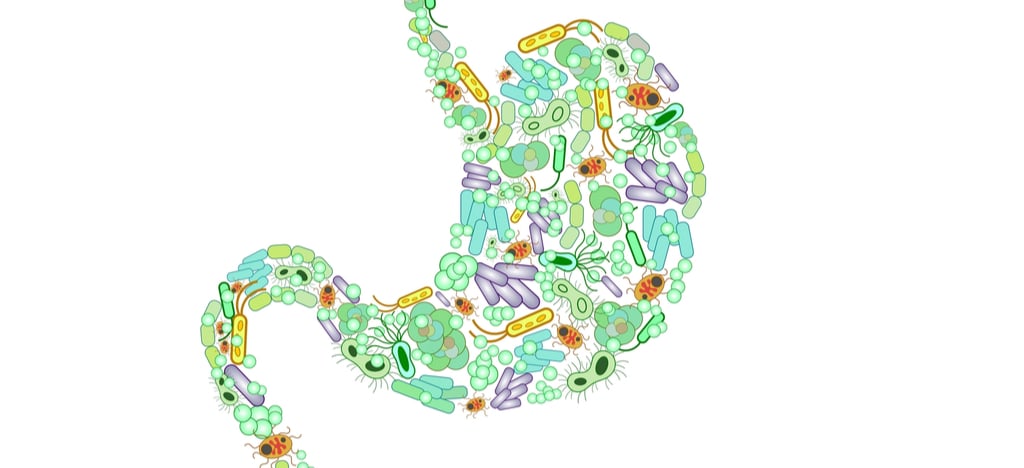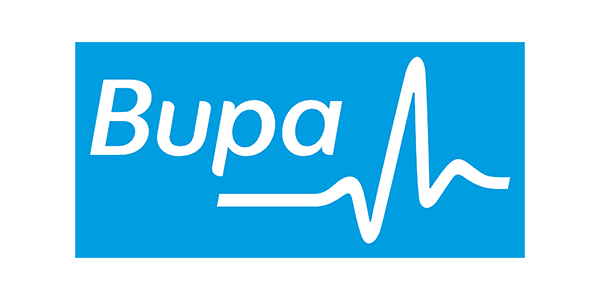What is the “The Gut Microbiome” ?
The Human gut is made up of trillions of bacteria, viruses and fungi living harmoniously (most of the time). And collectively, this is referred to as the Gut Microbiome.
While there are some harmful bacteria which cause disease, there are plenty of good guys which are beneficial to immunity, heart health, weight and moods.
The human body has approximately 30 trillion human cells. But there are 40 trillion bacterial cells in the body – which makes us more bacteria than human! There are more than a thousand distinct strains of bacteria in the human gut microbiome alone and each one plays a role in the body.
Gut Microbiome starts from birth
Studies show that the gut microbiomes start to affect our body from the beginnings in the womb. Traveling down the birth canal, being placed on the mother’s chest skin to skin right after birth and breastfeeding, all of these inoculate the infant’s gut with bacteria and starts the microbiome diversity. Studies show that breastmilk is an amazing source of probiotics and prebiotics for babies and those who are breastfed have more beneficial bifidobacteria as compared to those who are fed with substitutes.
We’re all unique
In fact, each person’s gut microbiome is as distinct as a fingerprint. The various strains of microorganisms, the quantity of each strain and their products of metabolism, all affect how the other types thrive in the gut. It is much like a rainforest’s fauna and flora – each organism plays a role in the healthy functioning of the gut.
The gut microbiome changes the way we metabolise food, it affects our mood (think GUT FEELINGS), it helps us manage our weight and even control our sugar metabolism and reduce the risk of diabetes too! So these tiny microbes are not to be taken lightly – did you know, collectively, all of our gut microbiome weights just as much as our human brain!
Five easy steps to improve gut health
- Eat a wide range of foods. A diverse microbiome requires a diverse food intake. Legumes, beans and fruit contain plenty of fibre (soluble and insoluble) which acts as scaffolding for the microbiome to grow on.
- Eat fermented foods. Yogurt (if you are not lactose or cow’s milk protein sensitive), sauerkraut, kimchi, kefir contain lots of lactobacilli species which can help displace the disease causing bacteria in the gut.
- Eat whole grains. Brown rice, whole grain pasta, quinoa and other unrefined grains contain a whole lot of fibre and carbohydrates like beta-glycans which feed certain species of bacteria which contribute to weight management, lowering cancer risk and diabetes
- Take antibiotics only when necessary. Antibiotics typically work as a sledgehammer and kill many good and bad bacteria in the gut and may contribute to weight gain and gastrointestinal issues. So take antibiotics only when absolutely necessary.
- Take a probiotic supplement. These are live bacteria which can help to restore the gut to a health state by “reseeding” it with healthy microbes.
OK, so what then are Probiotics and Pre-biotics?
You may have already heard of Pro-biotics and now there is a new player in the game: Pre-biotics. In the simplest terms, probiotics are beneficial bacteria for the body and prebiotics are food for the bacteria.
The general consensus on the definition of probiotics is “live microorganisms that, which when administered in adequate amounts, confer a health benefit on the host”.
Broken down, it means that:
- The organisms should be alive
- There should be sufficient doses given
- It needs to have an impact on the host.
Only when all these 3 conditions are met, can the product be named a probiotic.
Prebiotics, on the other hand, are defined as “a substrate that is selectively utilised by host microorganisms conferring a health benefit”. These are usually carbohydrates which cannot be broken down by human cells, but are used as fodder for the microbiome instead.
Does food which we eat have an impact on our gut?
Yes, yes and a resounding yes! The adage “You are what you eat” rings true.
The food which we place into our bodies has an essential role in balance of good and bad bacteria in the gut. Foods which are high in refined sugars and fats would negatively influence the microbiome and allow disease-causing organisms to thrive better than the others.
And when these organisms are fed regularly, they start to thrive and colonise the gut and prevent the good bacteria from doing so.
This may be one of the mechanisms behind insulin resistance, diabetes and heart disease.
And what about antibiotics use? What does that do to the microbiome?
Research tells us that antibiotic usage causes permanent changes in the gut bacterial flora especially when taken in childhood and adolescence. The impact of these changes may be lessened with the use of pre- and probiotics but also it is timely to advocate for the judicious use of antibiotics. This research is still in its infancy so watch this space.
It is recommended that probiotics are best taken between the doses of antibiotics so that there is a greater opportunity for the former to work in the gut before the antibiotics annihilate them.
Which foods are rich in prebiotics?
There is no need to buy fancy prebiotic supplements as they are all found right in your larder. These are mostly types of fibre which are found in legumes, fruits and vegetables. Our human gut, on its own, is not able to digest this fibre but our friendly bacteria can do that for us.
Foods rich in prebiotic potential are:
- Legumes, beans
- Oats
- garlic , leeks and onions
- Asparagus
- Berries
- Bananas
- Jerusalem artichokes (not the usual kind)
The good gut bacteria then breaks down these fibres into a short chain fatty acid called butyrate. And this is a substrate for other good gut bacteria (which promote immunity and healthy digestion) to thrive on.
Which foods are rich in probiotics?
A high quality yogurt with active cultures can be a fabulous addition to the gut’s bacteria if you are able to have lactose and cow’s milk proteins. Fermented foods are also another good option as they already come packaged with the beneficial bacterial which thrive on the naturally occurring sugars and fibres in the food.
Foods rich in probiotic potential are:
- Kombucha
- Kefir
- Sauerkraut
- Kimchi
- Pickles (unpasteurised) – as pasteurization kills off the bacteria.
So, should I take a probiotic supplement then?
Probiotics typically come in a capsule, pills or in a liquid form and they contain LIVE beneficial microbes. But they vary in their microbial content. There are many products out in the market which make claims with no proof of efficacy.
Probiotics do not come along with the fibre which helps the microbes to thrive on, so if someone is not consuming these prebiotics, there is a good chance that the probiotics are not going to be effective.
It is also recommended that a good probiotic supplement has a wide variety of strains of microbes and not just a single strain. It should also have the ability to travel past the strong acid environment of the stomach and make its way successfully down to the colon to function.
So your gut microbiome plays an essential function in health and well being and having plenty of prebiotic and probiotic foods in the diet allows the gut to customise its own balance of good and bad bacteria for effective functioning.

































